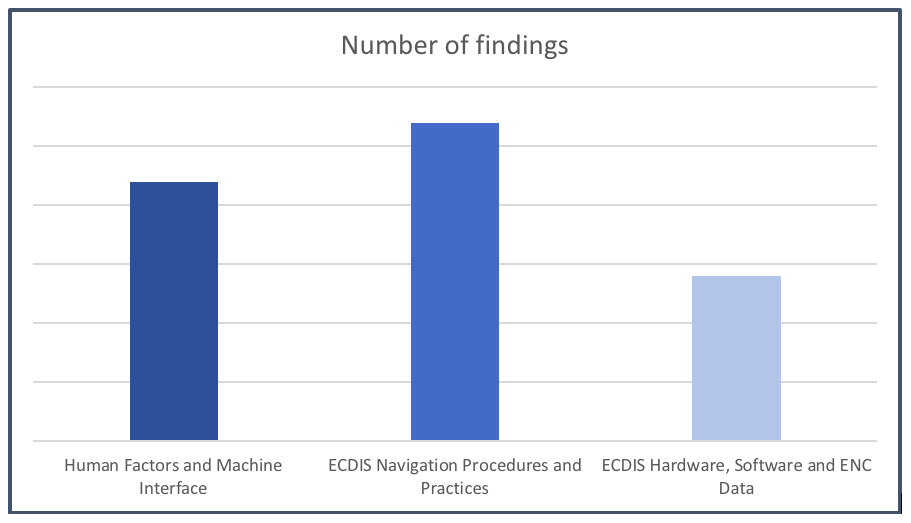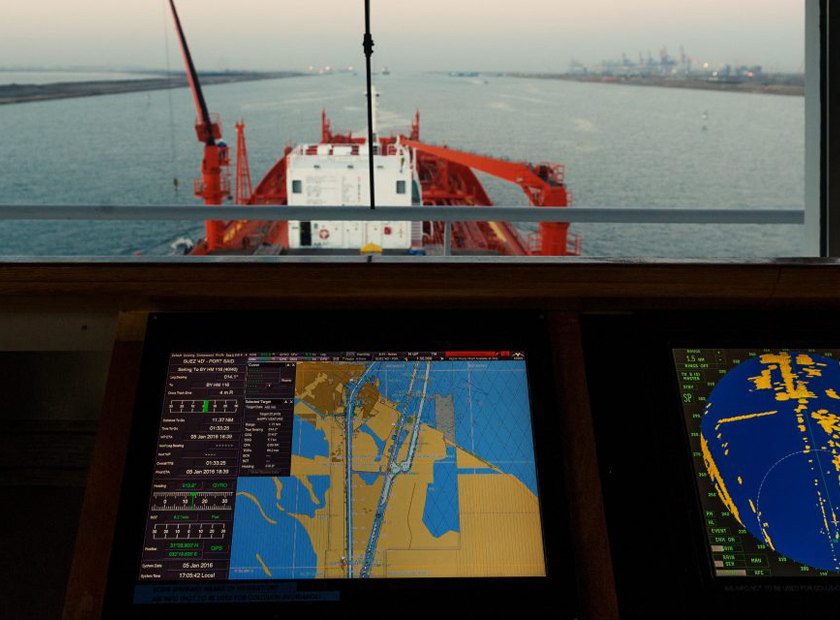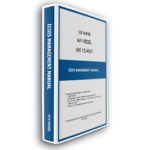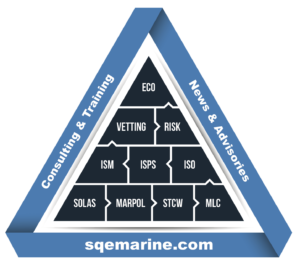OCIMF Recommendations
OCIMF has published guidance on how to improve policies and procedures concerning the safe use of Electronic Chart Display and Information Systems (ECDIS).
Scope of Guidance
With the increase of vessels using ECDIS as primary and secondary navigational charts, several navigational incidents have been reported, where one of the contributory factors has been ECDIS-related. As such, the guide summarizes the contributing factors identified from the analysis of navigational incidents as well as Ship Inspection Report Programme (SIRE).
Contributing factor analysis
OCIMF analyzed navigational incidents (11 published reports and seven company investigation reports) between 2016 and 2018, involving tankers fitted with ECDIS. SIRE observations related to ECDIS were also analyzed to identify common themes. The findings have been categorized into three main sections:
- Human factors and machine interface.
- ECDIS navigation procedures and practices.
- ECDIS hardware, software and ENC data.
The findings were also analyzed by taken into consideration the four stages of voyage planning:
- Appraisal
- Planning
- Validation
- Execution and monitoring
SOLAS Chapter 5, Annexes 24 & 25 titled “Voyage Planning” and “Guidelines for voyage planning”, the traditional stages of voyage planning do not include Validation stage. However experienced mariners, at the end of planning stage reviewed the developed plan, and presented it to bridge team. This was an unofficial validation stage. Nonetheless, planning on ECDIS requires a detailed review and validation in order to identify possible gaps during planning related to ECDIS specific characteristics and factors.
Findings
| Stage |
Human Factors and Machine Interface |
ECDIS Navigation Procedures and Practices |
ECDIS Hardware, Software and ENC Data |
| Appraisal |
- Lack of ECDIS system familiarity and lack of knowledge of ENC symbols
- Failure to interrogate chart cautions and symbols, such as isolated danger marks or cautionary areas
- Overreliance on ECDIS
- Largest scale ENC not uploaded
- ENC data and other available information not properly analysed (including sector light zones, sailing directions, mariner’s handbook and other relevant sources)
|
- Unclear ECDIS carriage policy
- Largest scale ENC not available
- Latest updates not applied to ENC database
- Under Keel Clearance (UKC) calculations do not consider Category Zone of Confidence (CATZOC), squat or height of tide
- Controlling depth (safe water) not accurately defined
- Unofficial charts used
- Minimum clearing distance from hazards not clearly defined (vertical – UKC and horizontal – distance off)
|
- Objects inaccurately charted
- ENC borders not aligned
- Chart and World Geodetic System (WGS) 84 datum discrepancies
- Features with area boundaries (such as reefs) are incorrectly programmed as point features
- Up-to-date port/berth information not shown on latest ENC
|
| Planning |
- Route plotted very close to or over navigational hazards
- Knowledge gaps and inability to distinguish between alarms, cautions and indicators
- Varying standards of ECDIS generic training, type-specific training and familiarisation
- Reducing safety margins (such as UKC or distance off)
|
- Berth-to-berth passage plan not available
- Incorrect application of safety depth and safety contour
- No-go areas and manual contours not defined as per calculated safe water depths or not made alarmable
- Safety parameters and alarm limits not set
- Cross-track Corridor (XTC) wider than available width of navigable waters
- Environmental factors (such as tidal streams) not considered in wheel-over calculation
|
- Software limitations for setting features such as wheel-over positions, manual no-go areas, manual layer and other information
- Course information not readily apparent over various legs
- Programmed safety contour layers not available at required safe water depth
|
| Validation |
- Automatic route check alerts ignored
- Lack of familiarity with route validation feature
|
- Visual checks not undertaken for each leg of the passage
- Manual route validation not conducted
- Automatic route validation feature not used
- Route validation (visual, manual and automatic) not undertaken by the Master as well as the Navigating Officer
- Route validated checks undertaken on a smaller-scale ENC
- After passage plan amendment, route not re-validated by Navigator and re-approved by Master
|
- Excessive number of alerts generated during system route check function
- Route validation feature is too complex to use
|
| Execution and Monitoring |
- Bridge distractions
- Incorrect route loaded on ECDIS
- Watchkeeper fatigue or lack of alertness
- Deviation off-track not noticed
- Audible alarms disabled
- System alerts ignored
- Acknowledging alerts without investigation (such as exiting XTC, anti-grounding alarm or critical points)
- Look-ahead not set properly
- Lack of user knowledge and system familiarity; for example, in the case of pilots and new on-signers
- Display settings not optimised for day, dusk, night light conditions
- Lack of familiarity with contingency plans and procedures
|
- Planned safety settings changed or not set before execution of passage, or subsequently
- Compilation scale not being used (navigation on over-scale or under-scale ENCs)
- Minimum layers for safe navigation not being displayed
- Position verification/plotting not being undertaken using combination of line of positions, radar overlays and/or parallel indexing, as and where available
- Look-ahead settings inappropriate or changed randomly
- Position not being monitored during pilotage
- Use of Automatic Identification System (AIS) on ECDIS as primary means of collision avoidance
- Lack of ECDIS-related contingency plans and procedures
|
- Course information not readily visually apparent over various legs
- Inadequate cyber security measures
- Visual perception of ECDIS data when set to day, dusk or night preset modes
- Issues with ECDIS power back-up
|
The flow of actions is based on the following:
System Installation ⇒ Procedures to support the System ⇒ Human implementation of procedures
From finding analysis without inserting any severity factors, it is revealed that the most challenging area is ‘’Procedures & Practices’’.

Actions required
Ship Managers should:
- Ensure that installed systems can support the latest industry specifications and requirements
- Implement procedures (within SMS or as a stand-alone plan) in order to provide guidance for the use of ECDIS systems and the
- integration of them within Bridge Operating Procedures
- Implement an effective system to verify, check and review the following:
- Officers’ assigned as head of navigational watch competence on the basic ECDIS procedures
- Their familiarity with ship specific ECDIS system use
- Effectiveness of ECDIS procedures
- Provide adequate training and feedback to crew members regarding use of ECDIS and analysis of incidents having as contributing
- ECDIS related factors and best navigational practices as implemented through the industry.
Masters should:
- Ensure strict implementation of Company’s procedures regarding use of ECDIS
- Review, validate and approve all developed voyage plans
- Conduct a detailed briefing on the voyage plan prior departure
Deck Officers assigned as in charge of navigational watch should:
- Follow the Company’s developed procedures for the ECDIS use
- Follow exactly the approved voyage plan and in case of changing situations to implement the related Company’s procedures (Calling the Master procedure, Master’s Standing orders etc)
- Be proactive and implement all best navigation practices, as provided through Company’s related training sessions.
You may also find further information on OCIMF Guidance on safe use of ECDIS at SAFETY4SEA
See also our related products
SQEMARINE can provide guidance on amending existing manuals or providing updated new ECDIS Management manual as required by client.




